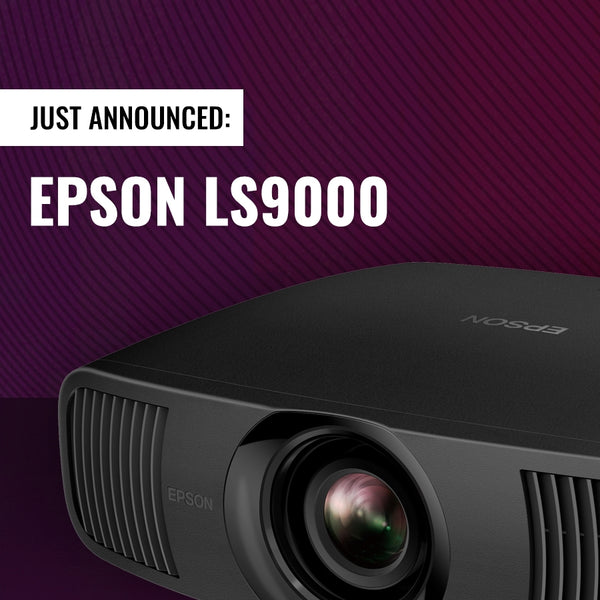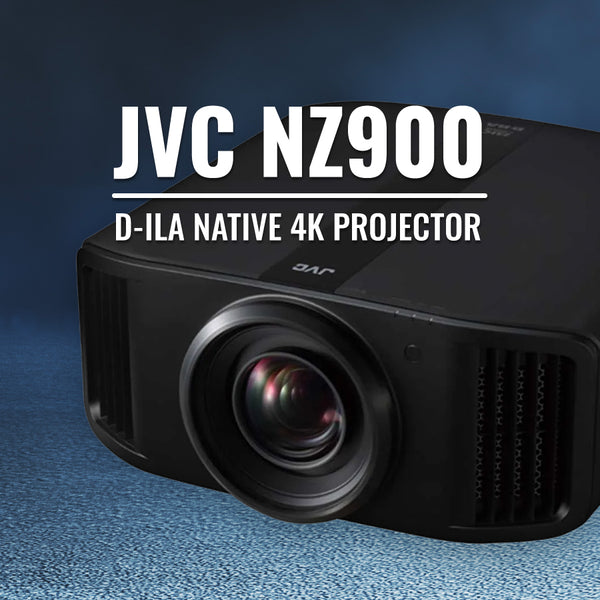Home Theater Automation: A Beginners Guide

This guest post comes to us from Patrick Sinclair of All Home Robotics. They have a ton of guides and rankings on how to automate your entire home.
The Internet of Things has a slightly ominous ring to it, doesn’t it? Far from being the opening premise to a movie about your home appliances chasing you around, however, it’s another way to refer to the technology that’s brought us Smart Homes. Everything from your air-con and thermostat to your garage doors, lights, and even your curtain rails can be brought online, allowing you to control them with the click of a button, an app, or your voice. One of the areas in which smart tech shows itself off to its best is in home theater automation. Today we take a closer look at what’s hot, what’s not, and how to set up a great smart home theater without breaking the bank.
Why Choose Home Theater Automation?
Why even look at an automated home theater setup? For many of us, creating the perfect room or nook to indulge a love of films and audio is a dream come true. Now imagine creating not only the best possible audio-visual experience but one where you can come home to your favorite music already playing or the movie ready to roll with no effort on your side?
Nowhere is the lure of a Smart Home more appealing than for an entertainment room. But, as with the bulk of smart tech, you have two choices. Buy a bunch of individual items, cobble them together, and spend half your hobby time trying to remember what app controls what. Or spend a little time and research, and create a seamless and integrated set-up from the start.
We’re here today to walk you through planning, choosing hardware and software, and creating the perfect smart home theater. What’s essential, what’s nice to have, and what’s just a waste of your cash? No matter your budget or preferences, you’ll soon have the confidence and knowledge you need to spend wisely and get the best bang for your buck.
Consider your Wider Smart Home
The very first step should be thinking about your overall home setup. Some of you will be adding your new automatic home theater to a home already packed with smart devices. Others may only want to focus their new tech on your home theater.
If you’re looking at automating other areas of your home, it makes sense to plan your theater setup with this in mind. You will want to build on the hardware, brands, infrastructure, and virtual assistant you’re already using (or planning to) in your home.
If your shiny new audio-visual room is your first step into the smart market, you have the freedom to build around that. However, it’s not a bad idea to look ahead and choose options you can expand on later if you prefer.
Budget, Size, and Other Considerations
Next, get real about your budget and the size of the setup you can add to your home. If you’re designing a full home theater room, that’s fantastic! If you just want a cutting-edge addition to your living room, there’s a ton you can do to create a great experience. But there’s no point in wasting time and money on plans you can’t bring to life. You’ll get much more from the experience if you nail down the space and budget you’re working with.
Next, spend time deciding on your priorities. Are you willing to splurge a little for the best possible audio but couldn’t give two hoots about smart lighting? Do you want the full theatrical experience? This will help ensure you spend where it counts and skip what doesn’t matter to you. Some thoughts:
- Where are you installing the theater, and how much space can it occupy?
- Do you have equipment or brand preferences?
- How many people will be seated?
- Do you want to buy from one location for convenience or hunt down bargains as you find them?
Now, let’s get that home theater automation underway!
Step One: The Controls
Many people get caught up in the fancy parts of a smart home theater- your lights, projectors, seating, and speakers, and forget the most important part. What’s under the hood?
It’s possible to build hubless smart homes. But there’s a lot to be said for an integrated and intuitive control system. Remember, an automated home theater needs every device online all the time and able to communicate with each other.
For most of us, this will lead us back to the market-leading hubs: Amazon’s Alexa, Apple’s Siri, or Google’s Assistant. There are some other choices, however:
- Amazon’s Alexa: This hub works with the broadest range of devices on the market currently, has wide third-party capabilities and is pretty intuitive to use. Amazon’s speakers have a rep as mediocre, however, and the hub can be ‘dumb’ compared to others. You need to talk to the speaker, there’s no app integration, and Amazon puts the onus on you to check compatibility with other products. It’s good for a fast setup.
- Apple’s Siri: Apple has made the most remarkable strides in privacy, using encryption between linked devices. Apple’s HomeKit makes integration easier, but you’re tied to Apple-only products, and the range is a lot smaller.
- Google’s Assistant: Google uses Android, and the hub is known to be a bit ‘smarter’ than others due to its integration with Google search. It’s still less supported than Alexa regarding third-party equipment, however, and it is less developed regarding privacy issues. Its audio quality is also a bit mediocre. You can use apps, rather than voice, easily.
- Samsung SmartHub: Will work through a tablet interface and has a better reputation in the A/V industry, but is primarily Samsung-only devices.
- Hubless: Hubless home theater automation is perfectly possible. You may end up with an excessive number of clickers and remotes, however, so plan ahead to reduce this as much as possible.
- Wink Hub 2: Wink can be a great choice to unite devices from manufacturers. It integrates well with Alexa and handles many protocols, including wi-fi and Bluetooth. It’s a solid choice for a modest home setup where you want to use a broad range of manufacturers.
- Theater-only Hubs: Savant, Creston, and Control4 are specialist home theater control systems you can use if you only care about this area of your home. They’re easier to scale if you want to build on your initial setup, and being A/V specific means the experience is all. But they won’t work with the rest of your home and will likely need a pro to set them up.
There’s no correct answer here, only the one that best suits your plans, so choose as you feel comfortable. However, if your home theater is part of a wider smart home, it is a good idea to select a broad hub.
Step 2: A/V Equipment
This will vary depending on your plans and preferences, but consider these:
Projector and Screen
The quality of the smart projector you use will heavily impact the viewing experience, so invest well. Don’t forget to pair it with a great home theater cinema screen, however. Even the best projector can only do so much without the right canvas.
If you’re using a motorized projector screen you can pair it with your projector so when you turn it on, the screen is triggered to automatically descend.
Key Considerations: The lumens of your projector will drive a lot of the experience. You also want one matched to the screen size and viewing distance with compatible resolutions. 4K UHD resolution is a must for any modern home theater.
Highlighted Product: If you want 4k, the Epson LS11000 has an excellent reputation for delivering high quality at a medium price.
Sound System and Speakers
Great sound is the other cornerstone of an automated home theater. Many people opt for soundbars. Usually, Bluetooth and wi-fi enabled, they’re made to deliver enthralling sound efficiently.
Like a projector screen, you can turn on your smart speakers by turning on your projector.
The three key hubs (Alexa, Siri, and Assistant) can easily step into the speaker role, but audiophiles will find them limited.
Key considerations: Do you primarily want sound that supports cinema and surround sound, or are you also an audiophile who loves music? You may want to invest in more sophisticated speaker systems if music is a priority. All should provide solid sound without distortion and be appropriate to the size of your space.
Highlighted Products: Hisense HS218 2.1 Channel Soundbar has a surprisingly low cost for what it delivers.
It pays to invest in high-quality products you won’t have to replace soon.
Step 3: Smart Comfort
That’s the core of your automated home theater built; now we can get comfortable! Other smart enhancements to consider include:
Smart Lighting
Home theater lighting can elevate your space to the next level. Smart lighting can take your cinema experience even further.
You want to get smart lighting that works with in-built wi-fi is available, or you can opt for lights that communicate with a bridge, an intermediary device that ‘talks’ to the lights.
Highlighted Product: Phillips has produced a great range of smart light bulbs with a reputation as reliable and non-finicky and some great mood lighting, but it will depend on your hub.
Switches and Sockets
Smart switches and sockets allow you to make mundane devices smart. They’re a nice-to-have but can extend your setup further.
Highlighted Product: If you’re looking at Google Assistant, the iHome Smart Plug is intuitive and easy to use, but there are many options.
Temperature Control
From smart fans to fully integrated thermostats, this helps you stay comfortable while you enjoy.
Highlighted Product: Nest has some appealing thermostat products, but there are many choices.
Cleaning
Keeping your home theater clean is a chore many enthusiasts loath doing. Take some of the stress out by automating it!
By using a Roomba or other robotic vacuum you can keep your floors food and dirt free. You can also keep dust out of the room by setting up a smart air filter that shuts off when you turn on your projector.
Highlighted Product: Roomba i7+ offers a thorough clean heling your home theater to stay neat and tidy.
Safety
Don’t forget carbon monoxide and smoke detectors, which can also be added to the smart setup. If you have kids, you may want to add a camera monitoring system to your setup, too.
Highlighted Product: Nest Protect has an excellent reputation, can be integrated with emergency lighting and is easy to set up.
Of course, none of this is strictly needed for a great home theater- but it is nice to have!
Step 4: Connectivity
Your smart devices are useless if you have patchy signals and dead zones. Make sure you have a fantastic connection in your A/V space. Wi-fi extenders can be a great tool for your home theater area.
Step 5: And Scene!
Once you have your hardware lined up and connected, it’s time to get that automation in place. Scenes and routines are set up through your chosen app or hub. This can be as simple as creating defaults for how family members like to enjoy their movies. Or you can choose specific lighting colors, volumes, and so on!
Every hub will handle this differently, but you will spend some time adding a ‘scene’ or ‘routine’ to the hub’s setup, linking settings for all devices you want in play for that scene. Test it, and when you’re happy, save it as a preset you can access with a click. You’ll still have the manual control option if you prefer.
Do I Need a Pro?
It depends on you. You can self-set up a fantastic home theater, but having an experienced pro do the setup can be more straightforward if a sophisticated setup with custom wiring is what you’re going for.
And there you have it! The basics of home theater automation are surprisingly simple, so have fun creating your perfect smart home theater.








